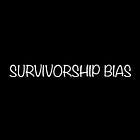Atomic Knowledge #21: The A.R.T. Framework for Empowered Refusal
How to say no without guilt, friction, or apology—by building an identity that says it for you.
⏱️ Reading Time ≈ 1 min
Empowered refusal is the practice of saying no from a place of clarity, integrity, and alignment. The A.R.T. framework, developed by Vanessa Patrick (The Power of Saying No, 2024), offers a structured approach to this essential skill through three inner competencies: Awareness, Rules, and Totality of self. It redefines refusal not as conflict, but as coherence.
Awareness is the foundation: a deep understanding of your values, priorities, and personal limits. Without it, every request feels urgent and negotiable.
Rules, not decisions transforms that awareness into simple, non-negotiable policies—“I don’t take meetings before 10am”—reducing decision fatigue and making boundaries predictable.
Totality of self means that every no becomes a whole-self expression, not a momentary deflection. You say no not as a fragment, but as someone already clear on who they are and what they stand for.
This framework is especially relevant in an age of overcommitment, blurred boundaries, and chronic burnout. It empowers individuals to protect their time and energy not through resistance, but through self-authored structure. Saying no becomes not a reactive struggle, but a proactive declaration of identity.
Empowered refusal turns every no into a boundary drawn with intention—a quiet but radical affirmation of self.
👋🏼 Make the most of it! Until next time, S.
Deepen Your Knowledge
The Power of No (podcast)
The ART Framework of Saying No (video)
Vanessa Patrick on The Art and Science of Saying No (podcast)
Patrick, 2024 - The Power of Saying No (book)
Previously on Atomic Knowledge
Whenever I encounter an interesting concept—whether it’s a theory, speculative idea, formula, or law—I strive to deeply understand it and see how it connects within my knowledge network. Once I’ve grasped its essence, I distill it into a concise, no-frills note: simple, atomic, and memorable. To keep things sharp and focused, I stick to a “lazy” limit of 1,500 characters, give or take. These atomic notes, often described as mental models, have revolutionized how I understand and link ideas, fostering a more organic and interconnected expertise. Believing in the power of sharing, I’ve decided to make them public. Think of these notes as tools: mental models to keep in your back pocket for quick use or prompts to deepen your understanding when inspiration strikes. Subscribe if you’re curious—you won’t want to miss them.









